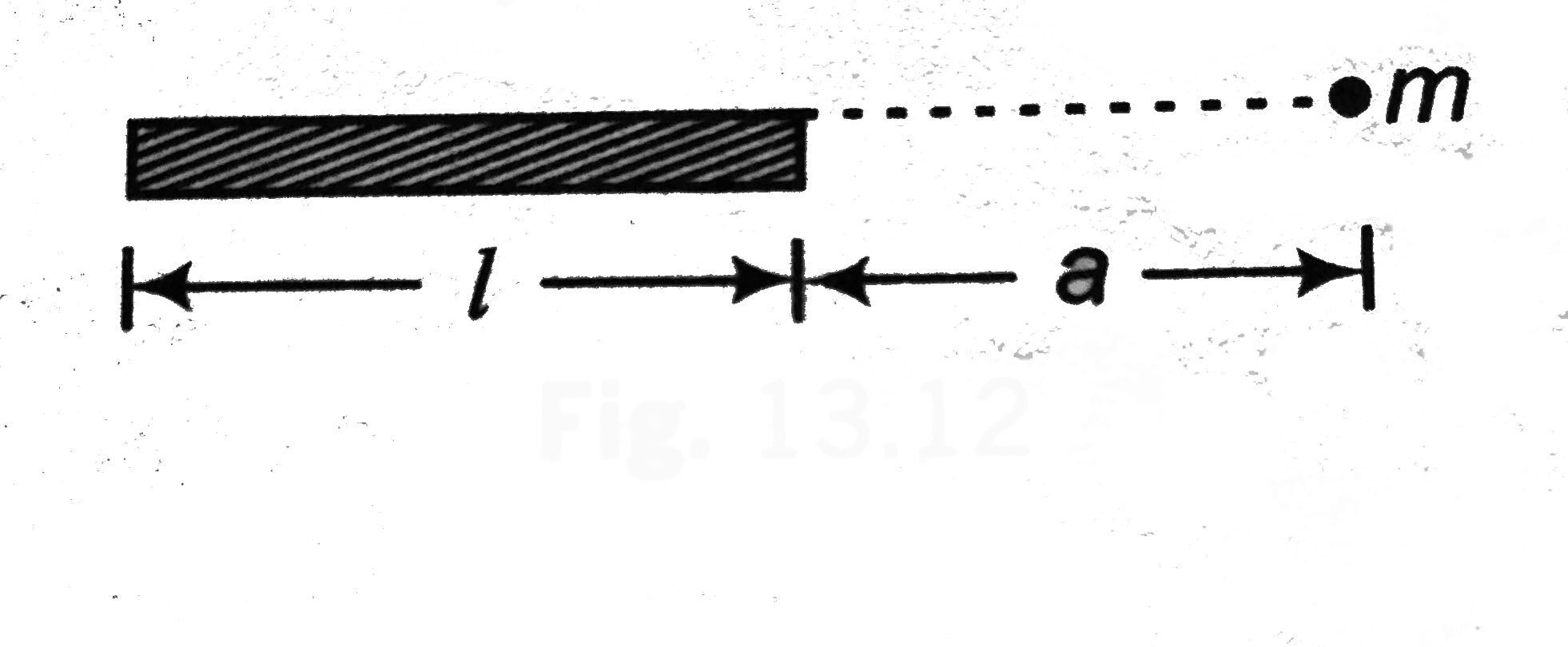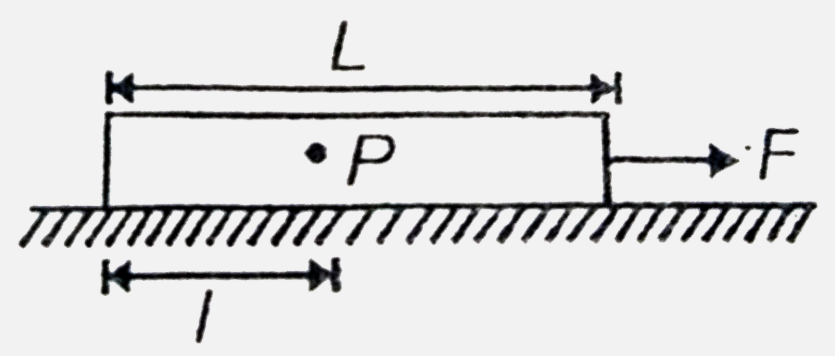A non-uniform wire of length l and mass M has a variable linear mass density given by μ=kx, where x is distance from one end of wire and k is a constant. Find the time taken by a pulse starting at one end to reach the other end when the tension in the wire is T.
The correct Answer is:B, C
To find the time taken by a pulse starting at one end of a non-uniform wire to reach the other end, we will follow these steps:
Step 1: Understand the problem
We have a wire of length l and mass M with a variable linear mass density given by μ=kx, where x is the distance from one end of the wire and k is a constant. We need to find the time taken for a pulse to travel the length of the wire under a tension T.
Step 2: Determine the velocity of the pulse
The velocity v of a wave in a string is given by the formula:
v=√Tμ
Since μ=kx, we can express the velocity as:
v=√Tkx
Step 3: Relate velocity to distance and time
The relationship between velocity, distance, and time is given by:
v=dxdt
Thus, we can write:
dxdt=√Tkx
Step 4: Rearrange the equation
Rearranging the equation gives:
dt=dx√Tkx
This simplifies to:
dt=√kT⋅√xdx
Step 5: Integrate to find total time
Now we need to integrate both sides. The total time t taken for the pulse to travel from x=0 to x=l is:
t=∫l0√kT⋅√xdx
This can be expressed as:
t=√kT∫l0√xdx
Step 6: Calculate the integral
The integral ∫l0√xdx can be calculated as follows:
∫l0√xdx=(23x3/2)l0=23l3/2
Step 7: Substitute back into the equation for time
Substituting the result of the integral back into the equation for time gives:
t=√kT⋅23l3/2
Step 8: Find the value of k
We know that the total mass M of the wire can be expressed as:
M=∫l0μdx=∫l0kxdx=k⋅l22
From this, we can solve for k:
k=2Ml2
Step 9: Substitute k back into the time equation
Substituting k into the time equation gives:
t=√2Ml2T⋅23l3/2
This simplifies to:
t=23⋅2M√T⋅l3/2l
Thus, the final expression for the time t is:
t=4M3√T⋅l1/2
Final Result
The time taken by the pulse to travel from one end of the wire to the other is:
t=4M3√T⋅l1/2
We have a wire of length l and mass M with a variable linear mass density given by μ=kx, where x is the distance from one end of the wire and k is a constant. We need to find the time taken for a pulse to travel the length of the wire under a tension T.
The velocity v of a wave in a string is given by the formula:
v=√Tμ
Since μ=kx, we can express the velocity as:
v=√Tkx
The relationship between velocity, distance, and time is given by:
v=dxdt
Thus, we can write:
dxdt=√Tkx
Rearranging the equation gives:
dt=dx√Tkx
This simplifies to:
dt=√kT⋅√xdx
Now we need to integrate both sides. The total time t taken for the pulse to travel from x=0 to x=l is:
t=∫l0√kT⋅√xdx
This can be expressed as:
t=√kT∫l0√xdx
The integral ∫l0√xdx can be calculated as follows:
∫l0√xdx=(23x3/2)l0=23l3/2
Substituting the result of the integral back into the equation for time gives:
t=√kT⋅23l3/2
We know that the total mass M of the wire can be expressed as:
M=∫l0μdx=∫l0kxdx=k⋅l22
From this, we can solve for k:
k=2Ml2
Substituting k into the time equation gives:
t=√2Ml2T⋅23l3/2
This simplifies to:
t=23⋅2M√T⋅l3/2l
Thus, the final expression for the time t is:
t=4M3√T⋅l1/2
The time taken by the pulse to travel from one end of the wire to the other is:
t=4M3√T⋅l1/2
Topper's Solved these Questions
- WAVE MOTIONBOOK - DC PANDEY ENGLISHCHAPTER - WAVE MOTIONEXERCISE - Level 2 Single Correct
5 Videos
- WAVE MOTIONBOOK - DC PANDEY ENGLISHCHAPTER - WAVE MOTIONEXERCISE - Level 2 More Than One Correct
6 Videos
- WAVE MOTIONBOOK - DC PANDEY ENGLISHCHAPTER - WAVE MOTIONEXERCISE - Level 1 Objective
6 Videos
- VECTORSBOOK - DC PANDEY ENGLISHCHAPTER - VECTORSEXERCISE - Medical enrances gallery
9 Videos
- WORK, ENERGY & POWERBOOK - DC PANDEY ENGLISHCHAPTER - WORK, ENERGY & POWEREXERCISE - Level 2 Comprehension Based
2 Videos
Similar Questions
Find centre of mass of given rod of linear mass density λ=(a+b(xl)2) , x is distance from one of its end. Length of the rod is l.
View SolutionThere is a rod of length l , its density varies with length as distance of λ=ax , where x is distance from left end. Find center of mass from left end.
View SolutionFind coordinates of mass center of a non-uniform rod of length L whose linear mass density lambda varies as lambda=a+bx, where x is the distance from the lighter end.
View SolutionA mass m is at a distance a from one end of a uniform rod of length l and mass M. Find the gravitational force on the mass due to the rod.

View SolutionA uniform thin rod AB of length L has linear mass density μ(x)=a+bxL, where x is measured from A. If the CM of the rod lies at a distance of (712L) from A, then a and b are related as :_
View SolutionA wire of length L is fixed at both ends such that F is tension in it. Its mass per unit length varies from one end to other end as μ=μ0x, where μ0 is constant. Find time taken by a transverse pulse to move from lighter end to its mid point.
View SolutionThe mass of a 10 m long wire is 100 grams. If a tension of 100 N is applied, calculate the time taken by a transverse wave to travel from one end to the other end of the wire.
View SolutionThe linear density of a thin rod of length 1m lies as λ=(1+2x), where x is the distance from its one end. Find the distance of its center of mass from this end.
View SolutionA mass m is at a distance a from one end of a uniform rod of length l and mass M. Find the gravitational force on the mass due to tke rod.

View SolutionFigure shows a rope of variable mass whose linear mass density is given by , λ=Ax , where A is + ve constant and x is distance from left end . It bis placed on a smooth horizontal surface . A force F is acting on it as shown .
(i) Find total mass of the rope .
(ii) Find tension at point P.

View Solution
